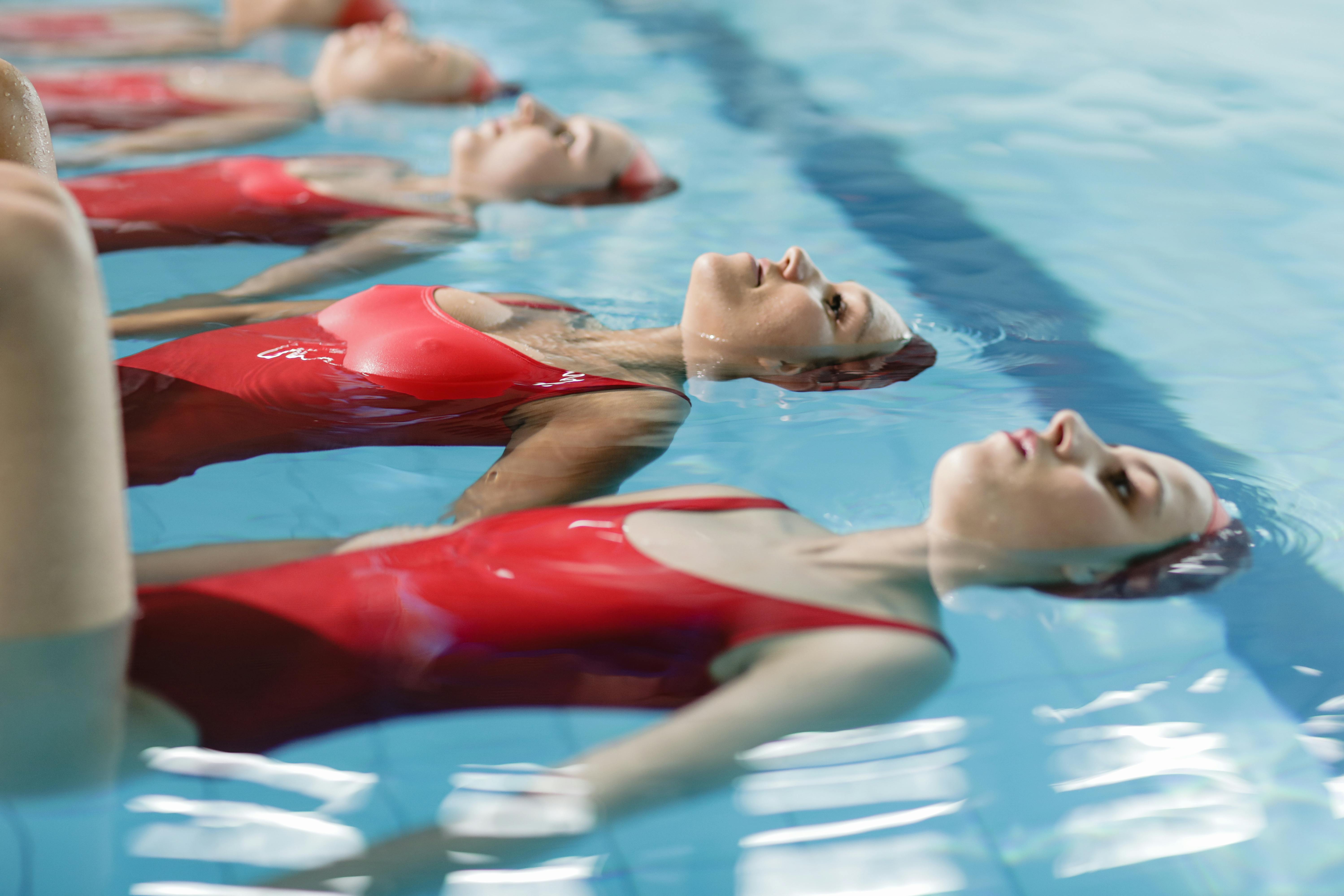Biofeedback in Elite Sports: Revolutionizing Performance Optimization
The world of elite sports is witnessing a silent revolution, one that's taking place not on the field or in the gym, but within the minds and bodies of athletes themselves. Biofeedback, a cutting-edge technique that allows athletes to gain unprecedented control over their physiological processes, is reshaping the landscape of sports performance. This groundbreaking approach is empowering athletes to push beyond their perceived limits, fine-tune their mental states, and achieve levels of performance once thought impossible.

The Genesis of Biofeedback in Sports
Biofeedback, at its core, is not a new concept. Its roots can be traced back to the early 20th century when researchers began exploring the idea that humans could gain conscious control over autonomic bodily functions. However, it wasn’t until the 1960s that biofeedback started to gain traction as a therapeutic tool, primarily in the medical field for treating conditions like migraines and hypertension.
The application of biofeedback in sports is a more recent development, emerging in the late 1970s and early 1980s. Pioneering sports psychologists and physiologists recognized the potential of this technique to enhance athletic performance. They began experimenting with using biofeedback to help athletes control stress, improve focus, and optimize physical states for peak performance.
One of the earliest and most notable applications of biofeedback in sports was with the U.S. Olympic team in the 1980s. Dr. Vietta Sue Wilson, a sports psychologist, worked with athletes using biofeedback techniques to manage pre-competition anxiety and improve concentration. This marked the beginning of a new era in sports psychology and performance enhancement.
As technology advanced, so did the sophistication and accessibility of biofeedback devices. What was once bulky, expensive equipment confined to laboratories became portable, user-friendly devices that could be used on the field, in the locker room, or even at home. This technological evolution has been crucial in the widespread adoption of biofeedback in elite sports.
Understanding Biofeedback: The Science Behind the Technique
To appreciate the impact of biofeedback in sports, it’s essential to understand the underlying science. Biofeedback is based on the principle that by providing individuals with information about their physiological processes, they can learn to control these processes voluntarily.
In a typical biofeedback session, sensors are attached to various parts of an athlete’s body to measure different physiological parameters. These may include:
-
Heart Rate Variability (HRV): Measures the variation in time between heartbeats, which is an indicator of the body’s stress levels and recovery state.
-
Electromyography (EMG): Measures muscle tension and activation, crucial for optimizing movement patterns and preventing injury.
-
Electroencephalography (EEG): Monitors brain wave activity, providing insights into mental states such as focus, relaxation, and arousal.
-
Skin Conductance: Measures the electrical conductivity of the skin, which changes with sweat gland activity and is an indicator of emotional arousal.
-
Respiration Rate: Monitors breathing patterns, which are closely linked to stress levels and performance.
The data from these sensors is then displayed in real-time on a screen or device, allowing the athlete to see immediate feedback on their physiological state. Through practice and guidance from trained professionals, athletes learn to recognize these signals and develop strategies to control them.
The key to biofeedback’s effectiveness lies in neuroplasticity – the brain’s ability to form new neural connections and pathways. As athletes repeatedly practice controlling their physiological responses, these new patterns become ingrained, leading to lasting changes in their ability to regulate their body’s functions.
Applications in Different Sports: Tailoring Biofeedback to Specific Disciplines
One of the most remarkable aspects of biofeedback is its versatility across various sports disciplines. Each sport has its unique demands, and biofeedback techniques can be tailored to address the specific challenges faced by athletes in different fields.
In precision sports like archery and shooting, biofeedback is used to help athletes achieve the perfect balance of focus and relaxation. By monitoring heart rate and muscle tension, archers and shooters can learn to enter a state of calm concentration, often referred to as “the zone,” at will. This ability to control physiological arousal can significantly improve accuracy and consistency.
For endurance athletes such as long-distance runners and cyclists, biofeedback plays a crucial role in optimizing pacing and energy management. By monitoring heart rate variability and respiration patterns, athletes can learn to maintain an optimal level of exertion throughout their performance, avoiding burnout and improving overall endurance.
In team sports like football and basketball, where quick decision-making and reaction times are crucial, EEG biofeedback has shown promising results. Athletes use this technique to enhance their ability to stay focused under pressure and make split-second decisions. By training their brain waves to maintain an optimal state of alertness, players can improve their on-field performance and reduce mental errors.
Combat sports athletes, such as boxers and mixed martial artists, use biofeedback to manage pre-fight anxiety and maintain composure during intense competitions. Techniques focusing on heart rate control and muscle relaxation help these athletes stay calm and focused, even in high-pressure situations.
Gymnasts and figure skaters, who require a delicate balance of strength, flexibility, and precision, use EMG biofeedback to refine their muscle control. This technique helps them achieve the perfect tension in specific muscle groups, leading to more graceful and controlled movements.
Mental Game: Biofeedback’s Role in Sports Psychology
While the physical applications of biofeedback are impressive, its impact on the mental aspect of sports performance is equally significant. Sports psychology has long recognized the crucial role that mental states play in athletic performance, and biofeedback provides a tangible way to address these psychological factors.
One of the primary uses of biofeedback in sports psychology is stress management. Performance anxiety is a common issue among athletes at all levels, and it can have a debilitating effect on performance. Biofeedback techniques, particularly those focusing on heart rate variability and skin conductance, help athletes recognize the physical signs of stress and anxiety. By learning to control these physiological responses, athletes can better manage their emotions and maintain composure under pressure.
Concentration and focus are other areas where biofeedback has shown remarkable results. EEG biofeedback, also known as neurofeedback, allows athletes to observe their brain wave patterns in real-time. Through training, they can learn to achieve and maintain optimal brain states associated with peak performance. This has been particularly beneficial in sports that require intense concentration, such as golf or tennis, where a momentary lapse in focus can have significant consequences.
Biofeedback also plays a crucial role in visualization and mental rehearsal techniques. Athletes often use visualization to mentally practice their performance, but the effectiveness of this technique can be enhanced when combined with biofeedback. By monitoring physiological responses during visualization exercises, athletes can ensure that their mental practice is eliciting the desired physical responses, making the rehearsal more effective and closely mimicking actual performance conditions.
Recovery and relaxation are other essential aspects of sports psychology where biofeedback has proven valuable. Athletes often struggle with “turning off” after intense training or competition. Biofeedback techniques can help them learn to consciously relax their bodies and minds, promoting better recovery and reducing the risk of burnout.
Case Studies: Success Stories from Elite Athletes
The effectiveness of biofeedback in elite sports is best illustrated through real-world examples. Numerous top-tier athletes across various disciplines have incorporated biofeedback into their training regimens with remarkable results.
One notable example is Michael Phelps, the most decorated Olympian of all time. While preparing for the 2012 London Olympics, Phelps worked with sports psychologists who used biofeedback techniques to help him manage pre-race anxiety and maintain focus during competitions. This approach contributed to his continued success in the pool, even as he faced younger competitors.
In the world of tennis, Novak Djokovic has been a vocal advocate for biofeedback and similar mind-body techniques. Djokovic has spoken about using biofeedback to improve his mental resilience and physical recovery between matches. His ability to maintain peak performance over long tournaments is often attributed to these advanced training methods.
The U.S. Women’s National Soccer Team, known for their dominance in international competitions, has also embraced biofeedback as part of their training. Players use various biofeedback techniques to enhance their mental preparation, manage fatigue, and optimize recovery between games. This holistic approach to performance has been cited as a key factor in their sustained success.
In individual sports, biathlete Clare Egan has used biofeedback to master the challenging combination of cross-country skiing and precision shooting. By using heart rate variability training, Egan has improved her ability to quickly transition from the high-intensity skiing to the calm focus required for accurate shooting.
These success stories are not isolated incidents. Many professional sports teams and Olympic training programs have integrated biofeedback into their standard practices, recognizing its potential to give athletes a competitive edge.
The Future of Biofeedback in Sports: Emerging Trends and Technologies
As technology continues to advance at a rapid pace, the future of biofeedback in sports looks incredibly promising. Several emerging trends and technologies are set to further revolutionize how athletes train and perform.
Wearable technology is at the forefront of this revolution. The development of more sophisticated, less obtrusive sensors means that athletes can now receive continuous biofeedback during actual training and competition, not just in controlled laboratory settings. Smart clothing embedded with sensors that can monitor everything from muscle activation to hydration levels is already in development and could soon become standard equipment for elite athletes.
Artificial Intelligence (AI) and machine learning are also set to play a significant role in the future of biofeedback. These technologies can analyze vast amounts of physiological data to identify patterns and provide personalized recommendations for performance optimization. AI-powered biofeedback systems could potentially predict and prevent injuries by detecting subtle changes in an athlete’s physiology that might indicate fatigue or strain.
Virtual and augmented reality (VR/AR) technologies are opening up new possibilities for biofeedback training. Athletes can now practice in simulated environments that closely mimic real competition conditions while receiving real-time biofeedback. This allows for more effective mental preparation and skill refinement without the physical strain of actual competition.
The integration of biofeedback with other performance-enhancing technologies is another exciting prospect. For example, combining biofeedback with genetic testing and personalized nutrition plans could create highly individualized training programs that are optimized for each athlete’s unique physiology.
As our understanding of the brain-body connection deepens, we can expect to see more sophisticated neurofeedback techniques emerge. Advanced EEG systems may allow athletes to fine-tune their mental states with unprecedented precision, potentially unlocking new levels of human performance.
Ethical Considerations and Controversies
While the potential benefits of biofeedback in sports are clear, its increasing prevalence has also raised some ethical questions and controversies within the sporting community.
One of the primary concerns is the issue of fairness and accessibility. As biofeedback technology becomes more advanced and its benefits more pronounced, there’s a risk of creating a “technological divide” in sports. Athletes and teams with access to the latest biofeedback tools may have a significant advantage over those who don’t, potentially exacerbating existing inequalities in sports.
There are also questions about the long-term effects of relying heavily on biofeedback. Some critics argue that an overreliance on technology could potentially diminish an athlete’s natural intuition and ability to read their own body. There’s a fear that athletes might become too dependent on external feedback, potentially hindering their performance if the technology is not available.
The use of biofeedback in youth sports is another area of debate. While the techniques can be beneficial for young athletes, there are concerns about the pressure it might place on children to optimize their performance at a young age, potentially leading to burnout or a loss of enjoyment in sports.
Privacy concerns are also emerging as biofeedback devices collect increasingly detailed physiological data. The storage, ownership, and potential misuse of this sensitive information are issues that sports organizations and regulatory bodies will need to address.
Additionally, there are ongoing discussions about where to draw the line between performance enhancement and unfair advantage. As biofeedback techniques become more sophisticated, they may approach a grey area in terms of what constitutes a natural versus artificially enhanced performance.
Implementing Biofeedback: Practical Considerations for Athletes and Coaches
For athletes and coaches interested in incorporating biofeedback into their training regimens, there are several practical considerations to keep in mind.
First and foremost, it’s crucial to work with qualified professionals. Effective biofeedback training requires expertise in both the technology and the physiological processes being monitored. Sports psychologists, physiologists, and certified biofeedback practitioners can provide the necessary guidance to ensure that the techniques are being used correctly and effectively.
Choosing the right equipment is also essential. There is a wide range of biofeedback devices available, from simple heart rate monitors to complex multi-sensor systems. The choice of equipment should be based on the specific needs of the athlete and the particular aspects of performance being targeted.
Integration with existing training programs is another important consideration. Biofeedback should complement, not replace, traditional training methods. It’s most effective when used as part of a holistic approach to performance enhancement that includes physical training, nutrition, and mental preparation.
Consistency and patience are key when implementing biofeedback techniques. Like any skill, learning to control physiological processes takes time and practice. Athletes should be prepared to commit to regular biofeedback sessions and understand that significant improvements may take weeks or months to manifest.
It’s also important to set realistic goals and expectations. While biofeedback can lead to significant performance improvements, it’s not a magic solution. It should be viewed as one tool among many in an athlete’s arsenal for achieving peak performance.
Finally, athletes and coaches should stay informed about the latest developments in biofeedback technology and research. The field is rapidly evolving, and new techniques and applications are constantly emerging.
Conclusion: The Biofeedback Revolution in Sports
As we look to the future of elite sports, it’s clear that biofeedback will play an increasingly central role in athletic training and performance optimization. This technology offers a unique bridge between the physical and mental aspects of sports, providing athletes with unprecedented control over their bodies and minds.
The potential of biofeedback extends far beyond just improving athletic performance. It offers valuable insights into human physiology and psychology, contributing to our broader understanding of peak human performance. The lessons learned from biofeedback in sports have implications for fields ranging from medicine to education.
However, as with any powerful tool, the use of biofeedback in sports must be approached thoughtfully and responsibly. Balancing the pursuit of peak performance with ethical considerations and the long-term well-being of athletes will be crucial as this technology continues to evolve.
For athletes, coaches, and sports enthusiasts alike, the biofeedback revolution represents an exciting new frontier in human performance. As we continue to push the boundaries of what’s possible in sports, biofeedback stands as a testament to the remarkable potential of the human body and mind when working in harmony.
The silent revolution of biofeedback in elite sports is not just changing how athletes train and compete; it’s transforming our very understanding of human potential. As this technology continues to advance, we can expect to see new records broken, new levels of skill achieved, and perhaps even new sports emerge that fully leverage these capabilities.
In the end, biofeedback in sports is more than just a performance enhancement tool. It’s a window into the incredible capacities of the human body and mind, offering insights that extend far beyond the realm of athletics. As we continue to explore and refine these techniques, we’re not just creating better athletes – we’re expanding our understanding of what it means to be human.





